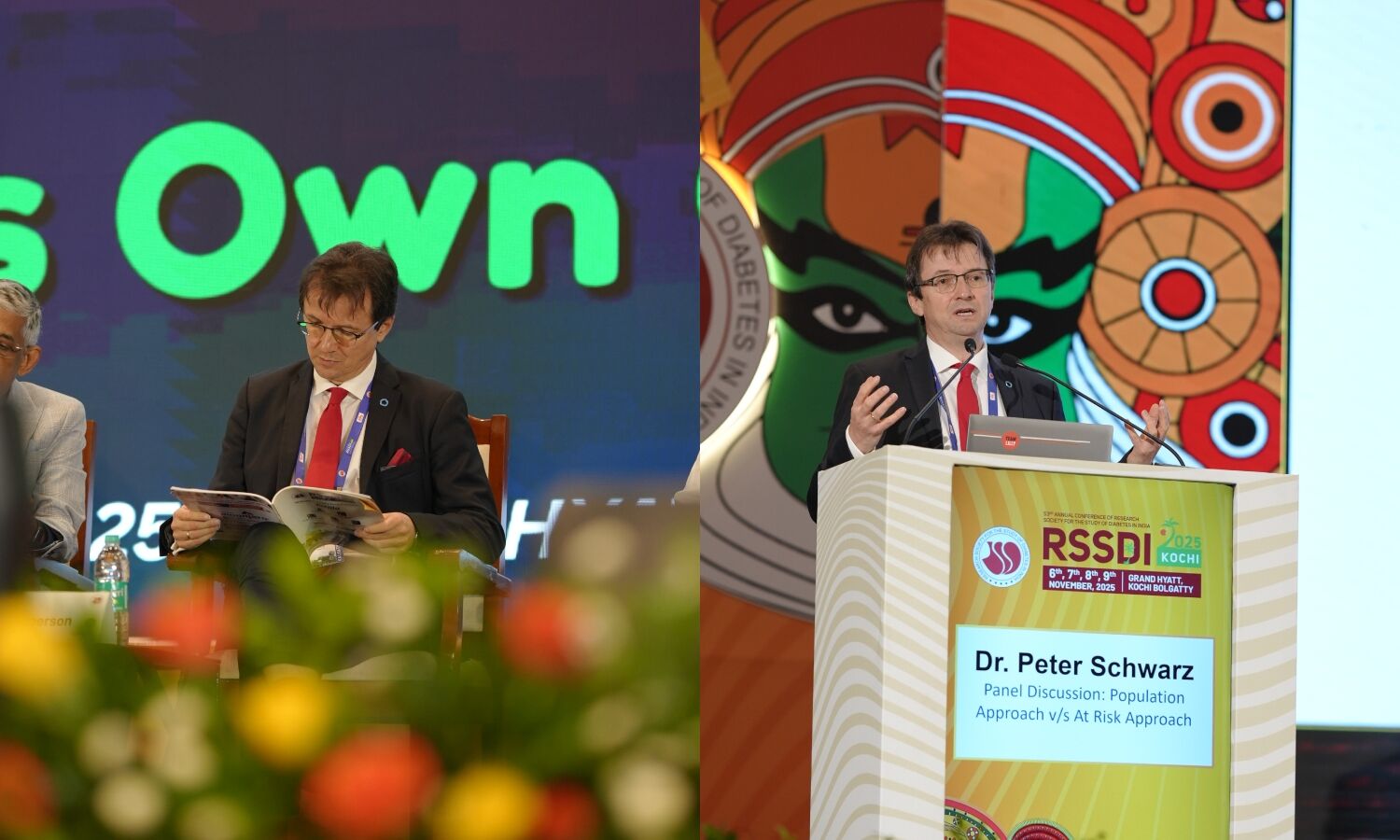Kochi: India’s growing diabetes crisis is being fuelled not just by sugar or sedentary lifestyles, but by the country’s deep-rooted dietary habits, particularly the consumption of fried carbohydrates, warned Peter Schwarz, President of the International Diabetes Federation (IDF).
Speaking at the 53rd National Conference of the Research Society for the Study of Diabetes in India (RSSDI), Dr. Schwarz cautioned that while carbohydrates themselves are not harmful, frying them alters their structure, making them toxic to the liver and contributing to fatty liver disease, even among lean individuals.
“Indians are particularly vulnerable due to a combination of low protein intake, frequent consumption of fried carbohydrates, and worsening air pollution,” Dr. Schwarz said. “Even slim individuals in India are prone to fatty liver because of these dietary patterns.”
Air Pollution Emerging as a Key Diabetes Risk
Expanding on new research, Dr. Schwarz identified air pollution as a significant and often overlooked risk factor for diabetes in India. He said long-term exposure to polluted air has been linked to insulin resistance and higher rates of metabolic disease.
“Air pollution is now a major health concern in India, with several cities ranking among the most polluted in the world, including the national capital, New Delhi,” he said.
He noted that air pollution, combined with poor diet and limited access to preventive healthcare, is intensifying India’s vulnerability to both cardiovascular diseases and diabetes, creating what he called a “dual epidemic of metabolic and environmental origin.”
New Drugs and AI Technologies Offer Hope
Despite the challenges, Dr. Schwarz expressed optimism about the future of diabetes management, citing the emergence of new weight-loss drugs and AI-powered diagnostics as promising tools.
“These are excellent possibilities for diabetes management,” he said. “However, they must be taken continuously; once discontinued, lost weight is regained, neutralising long-term health outcomes.”
On technological innovation, Dr. Schwarz pointed to AI-supported glucose monitoring sensors as a game-changer.
“AI-based glucose sensors will play a transformative role in diabetes care,” he said. “Although currently expensive, their prices will likely fall within three years, making them more affordable for patients in low- and middle-income countries.”
Experts Emphasise Diverse Challenges in India
The symposium, titled “Cardiovascular Risk Prevention in Type 2 Diabetes in Lower-Middle-Income Countries,” brought together leading medical experts, including Dr. Jothydev Kesavadev, Dr. V. Mohan, Dr. D. Prabhakaran, and Dr. Denis Xavier, who discussed the wide-ranging challenges of diabetes prevention in India.
Dr. S. V. Madhu of the All India Institute of Medical Sciences (AIIMS) spoke about India’s highly varied diabetes patterns.
“India’s diabetes profile is not homogenous,” he said. “The diversity of genetic, lifestyle, and environmental factors complicates management and calls for region-specific approaches.”
Adding to the discussion, Dr. Jayakrishnan B., Professor at the Educare Institute of Dental Sciences, Malappuram, presented findings linking workplace stress to increased diabetes risk.
“Workplace stress is an overlooked epidemic,” he said. “Working women are particularly vulnerable because of the dual pressures of professional duties and household responsibilities.”
Towards a Preventive Framework
The experts agreed that India’s fight against diabetes requires a multi-dimensional strategy, targeting not just diet and exercise, but also environmental health, mental well-being, and access to early diagnostics.
As Dr. Schwarz concluded, India’s path forward lies in awareness and prevention. While new drugs and technologies hold promise, he stressed that a shift in food habits and urban health policies will be critical to curbing the country’s escalating diabetes burden.
Source link
